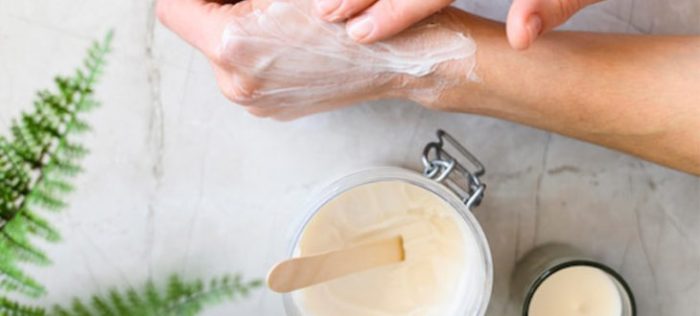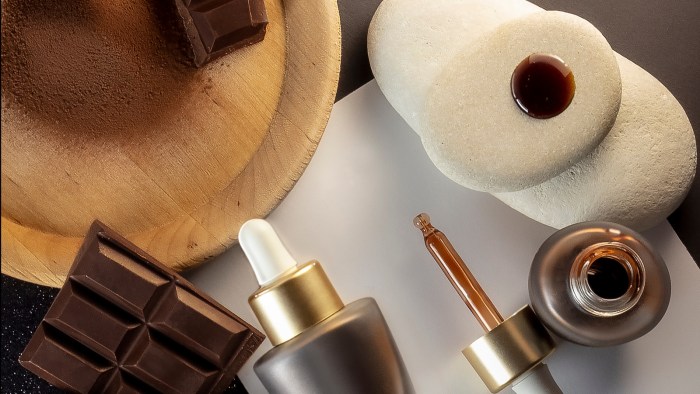DIY self tanner that doesn’t wash off – a dream for anyone seeking a sun-kissed glow without the commitment of frequent reapplications. But achieving a long-lasting tan without professional help can seem daunting. This guide delves into the science behind self-tanning, explores the key differences between wash-off and long-lasting formulas, and provides practical tips for creating your own DIY self-tanner that delivers a lasting, natural-looking tan.
From understanding the ingredients that make self-tanners work to mastering application techniques and maintaining your tan, we’ll equip you with the knowledge and confidence to achieve a flawless, sun-kissed look that lasts. Whether you’re a self-tanning novice or a seasoned DIY enthusiast, this guide will help you unlock the secrets to achieving a radiant, long-lasting tan at home.
Popular DIY Self-Tanner Recipes: Diy Self Tanner That Doesn’t Wash Off

Creating a natural, sun-kissed glow without the harmful effects of UV rays is possible with DIY self-tanners. These recipes utilize natural ingredients that can help enhance your skin tone and create a subtle tan. However, it’s crucial to understand that these DIY methods may not produce the same results as commercial self-tanners and might require repeated applications to achieve a noticeable difference.
Coffee Grounds Self-Tanner
Coffee grounds are a popular ingredient for DIY self-tanners due to their ability to stain the skin. The caffeine in coffee grounds can also provide a temporary tightening effect.
- Ingredients:
- 1/2 cup strong brewed coffee grounds
- 1/4 cup cocoa powder
- 2 tablespoons coconut oil
- 1 tablespoon honey
- Instructions:
- Combine all ingredients in a bowl and mix until a smooth paste forms.
- Apply the paste to your skin in circular motions, avoiding sensitive areas like the eyes and mouth.
- Leave the paste on for 15-20 minutes, then rinse it off with warm water.
- Repeat this process 2-3 times per week for best results.
Beetroot Self-Tanner
Beetroot is a natural source of betalains, pigments that give the vegetable its vibrant red color. Betalains can temporarily stain the skin, creating a reddish-brown hue.
- Ingredients:
- 1 medium-sized beetroot, boiled and mashed
- 2 tablespoons coconut oil
- 1 tablespoon lemon juice
- Instructions:
- Combine all ingredients in a bowl and mix until a smooth paste forms.
- Apply the paste to your skin in circular motions, avoiding sensitive areas.
- Leave the paste on for 15-20 minutes, then rinse it off with warm water.
- Repeat this process 2-3 times per week for best results.
Carrot Self-Tanner
Carrots are rich in beta-carotene, a precursor to vitamin A. Beta-carotene can give the skin a slight orange tint, but it’s not as effective as other natural ingredients for achieving a tan.
- Ingredients:
- 1 cup grated carrots
- 1/4 cup coconut oil
- 1 tablespoon honey
- Instructions:
- Combine all ingredients in a blender and blend until a smooth paste forms.
- Apply the paste to your skin in circular motions, avoiding sensitive areas.
- Leave the paste on for 15-20 minutes, then rinse it off with warm water.
- Repeat this process 2-3 times per week for best results.
Maintaining a Long-Lasting Tan
Achieving a beautiful, sun-kissed glow with self-tanner is just the first step. To extend the life of your tan and keep it looking its best, proper care and maintenance are essential. This involves understanding how to shower and exfoliate correctly, choosing the right moisturizers, and addressing any unevenness that might appear.
Showering and Exfoliating for a Long-Lasting Tan
Showering and exfoliating play a crucial role in maintaining a long-lasting tan. By following these tips, you can ensure your tan fades evenly and stays vibrant for longer:
- Choose a Gentle Cleanser: Opt for a mild, pH-balanced cleanser that won’t strip away your tan. Avoid harsh soaps or scrubs that can cause uneven fading.
- Lukewarm Water: Hot water can dry out your skin and accelerate the fading process. Shower in lukewarm water to help preserve your tan.
- Exfoliate Regularly: Exfoliating removes dead skin cells, which can make your tan appear patchy. However, don’t overdo it. Exfoliate once or twice a week using a gentle scrub or a mitt.
- Pat Dry: Avoid rubbing your skin dry with a towel, as this can cause friction and lead to uneven fading. Instead, gently pat your skin dry.
Moisturizing for a Long-Lasting Tan
Moisturizing is key to keeping your tan hydrated and preventing it from fading prematurely. Here’s how to choose the right moisturizers:
- Choose a Hydrating Moisturizer: Look for moisturizers that are rich in emollients, such as shea butter, cocoa butter, or hyaluronic acid. These ingredients help to lock in moisture and keep your skin supple.
- Avoid Oil-Based Moisturizers: Oil-based moisturizers can cause your tan to fade faster. Stick to water-based moisturizers instead.
- Moisturize Regularly: Apply moisturizer to your entire body, especially to areas that tend to dry out quickly, such as your elbows, knees, and ankles.
Addressing Uneven Fading and Streaks
Even with careful application and maintenance, uneven fading and streaks can sometimes occur. Here’s how to address these issues:
- Gentle Exfoliation: If you notice streaks or uneven fading, use a gentle exfoliating scrub or mitt to remove the excess self-tanner. Focus on the areas where the streaking is most noticeable.
- Apply a Light Layer of Self-Tanner: Once you’ve exfoliated, apply a light layer of self-tanner to the areas that are fading or streaky. This will help to even out the color and refresh your tan.
- Use a Tanning Mitt: To avoid streaks in the future, always use a tanning mitt when applying self-tanner. This will help to distribute the product evenly.
Troubleshooting Common DIY Self-Tanner Problems

Achieving a flawless, natural-looking tan with DIY self-tanner requires a little finesse and attention to detail. While it can be a cost-effective way to achieve a sun-kissed glow, common issues like streaking, uneven color, and fading can arise. By understanding the causes and solutions to these problems, you can minimize these issues and enjoy a beautiful, long-lasting tan.
Streaking, Diy self tanner that doesn’t wash off
Streaking is a common problem with DIY self-tanner, often resulting from uneven application or improper blending. It can also be caused by using too much product or applying it to dry skin.
- Exfoliate before applying self-tanner: Exfoliating removes dead skin cells, creating a smooth surface for even application.
- Use a tanning mitt: A tanning mitt ensures even distribution of the product and helps to blend it seamlessly into the skin.
- Apply in thin, even layers: Applying too much product can lead to streaking and uneven color.
- Blend thoroughly: Use circular motions to blend the self-tanner into your skin, paying close attention to areas like knees, elbows, and ankles.
- Wash your hands immediately after application: This prevents the self-tanner from staining your palms.
Uneven Color
Uneven color can be caused by a variety of factors, including inadequate preparation, uneven application, or the use of the wrong type of self-tanner.
- Choose the right formula: Opt for a self-tanner that suits your skin type and desired level of tan.
- Prepare your skin: Exfoliate thoroughly and moisturize dry areas before applying self-tanner.
- Use a gradual tanner: If you are new to self-tanning, start with a gradual tanner, which builds color gradually over time.
- Apply in sections: Apply the self-tanner in small sections, blending each section thoroughly before moving on to the next.
- Wait for the first application to dry before applying more: Applying multiple layers before the first layer dries can lead to uneven color.
Fading
Fading is a natural process that occurs with any tan, whether it is from the sun or self-tanner. However, you can extend the life of your tan by following these tips.
- Moisturize regularly: Dry skin sheds more quickly, causing the tan to fade faster. Moisturizing daily helps to keep your skin hydrated and prolong the tan.
- Avoid hot showers and baths: Hot water can strip away moisture and cause the tan to fade more quickly.
- Exfoliate gently: Exfoliating too aggressively can remove the tan prematurely.
- Use a tan extender: Tan extenders contain ingredients that help to maintain the tan’s color and prevent fading.
Severe Skin Reactions
In rare cases, self-tanner can cause severe skin reactions, such as redness, itching, and blistering. If you experience any of these symptoms, discontinue use immediately and consult a dermatologist.
It is important to note that self-tanning products are not regulated by the FDA and can vary in quality and ingredients. If you have sensitive skin or a history of skin allergies, it is essential to test a small area of skin before applying self-tanner to your entire body.
With a little knowledge, preparation, and the right ingredients, you can achieve a beautiful, long-lasting tan without relying on expensive salon treatments. Remember, patience is key when it comes to DIY self-tanning. Start with a patch test, follow the steps carefully, and don’t be afraid to experiment with different recipes until you find what works best for your skin. Embrace the DIY journey and enjoy the satisfaction of creating a sun-kissed glow that truly lasts.
DIY self tanner that doesn’t wash off is a great way to achieve a long-lasting tan. If you’re looking for a more permanent solution, you could consider a DIY nail design using diy nail techniques. However, if you’re aiming for a tan that fades naturally, a DIY self tanner is a good option, and there are many recipes online.
